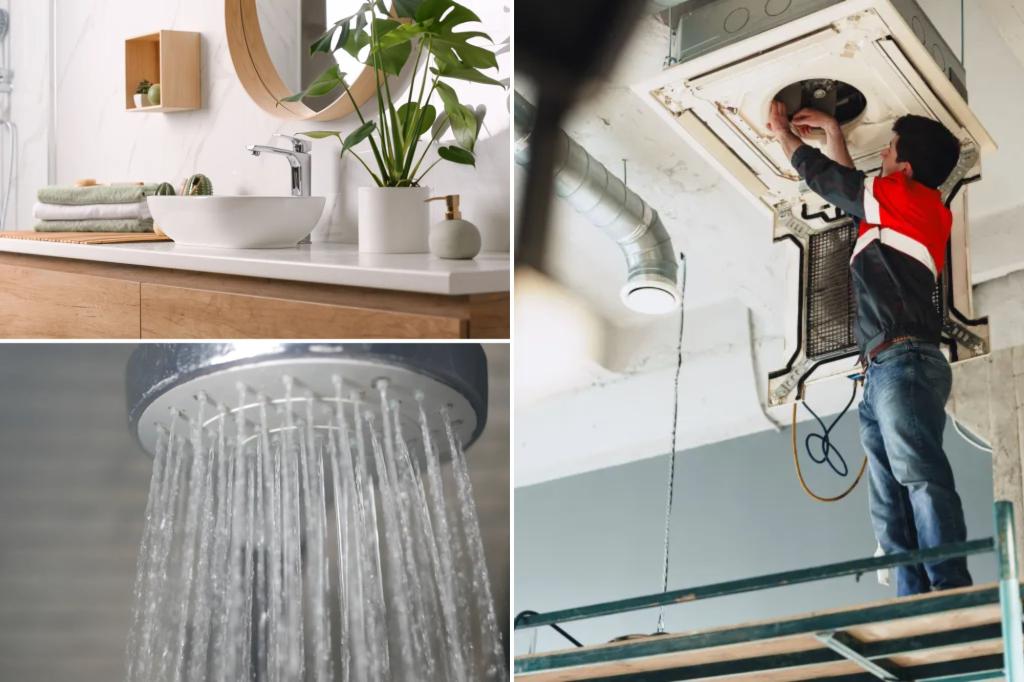
August is National Water Quality Month and the perfect time to give your water some TLC.
With low-flow water fixtures, you can do so just that—while still keeping your budget in check.
“Low-flow plumbing fixtures are made to help you use less water in your home without greatly reducing the water pressure. They use gravity-flow designs and built-in pressure systems to get the job done with less water each time,” says Joseph Wade, vice president of operations for Benjamin Franklin Plumbing in Cleveland, OH.
Place them in your bathroom, and watch your water bill go down and water quality go up.
Why low-flow fixtures are worth it
Low-flow bathroom fixtures like showerheads, toilets, faucets, and even urinals are specifically engineered to use less water than their standard counterparts.
“As an example, it can take a standard toilet anywhere from 3.5 to 6 gallons per flush, while a low-flow or high-efficiency toilet consumes as little as 1.28 gallons,” says Alex Atkinson, plumber and HVAC technician at Super Brothers in Sacramento, CA.
Similarly, low-flow showerheads typically limit flow to 2.0 gallons per minute or less, while the old standard was 2.5 GPM or more.
“These fittings utilize smart technology like aerators, pressure-compensating valves, and dual-flush components to deliver strong pressure while reducing water usage,” explains Atkinson.
The most obvious perk of low-flow fixtures is reduced water use, which means lower water bills. If you have a family of four, for example, you can save up to 20,000 gallons of water per year by simply fitting toilets and showerheads with low-flow features.
While these appliances don’t have the ability to filter water themselves, they indirectly enhance your water quality.
“For example, by alleviating the pressure on municipal water systems, they lighten the load on water treatment plants, thereby leading to cleaner, better-regulated local water supplies,” says Atkinson.
They’re available at your local home improvement store for fairly cheap
You don’t have to be a licensed plumber or go somewhere fancy to buy some low-flow fixtures for your bathroom. Just pop into a nearby Lowe’s or Home Depot and you’re sure to find plenty of options.
“I always recommend starting with a WaterSense-certified toilet. They’re EPA-tested to ensure strict performance and efficiency standards using no more than 1.28 gallons per flush (GPM) compared to older toilets that use over double that,” explains Atkinson.
Atkinson also recommends a low-flow showerhead, like the Niagara Earth 1.25 GPM or Kohler Awaken series, which has very good pressure but reduces water consumption by a substantial amount.
“For bathroom faucets, you should use a 1.2 GPM-rated faucet with an aerator to give you a steady stream and consume up to 45% less water compared to a standard faucet,” says Atkinson.
A basic WaterSense-approved, low-flow showerhead can start between $15 and $25, while high-end options with multispray settings and pressure-boosting technology can run from $50 to $100. Low-flow bathroom faucets will begin around $30 to $75, and installing a simple aerator attachment will cost as little as $10.
WaterSense-approved toilets typically begin at $150 and go up to to $350, depending on design and flushing technology, with dual-flush options being slightly higher.
“The good news is that most of these upgrades pay back in one to three years in energy and water savings and are a smart investment for your wallet as well as the planet,” explains Atkinson.
Other ways to improve your water quality
Low-flow fixtures are just one cost-effective way to give your water a makeover. Here are several other options:
Install a whole-house filter
This can make your water taste and smell better, which is ideal for drinking, cooking and bathing.
“It also helps cut down on exposure to things you don’t want in your water, like lead and PFAS,” explains Wade.
Clean your showerheads every few months
This is a simple but effective way to enhance your water quality. Here’s why: Mineral deposit not only reduces flow but also affects water taste and clarity.
Consider a water softener
A water softener, which helps stop minerals from building up in your pipes, is usually a good idea.
“It can reduce the risk of problems in your water and keep your family healthy,” says Wade.
Schedule an annual plumbing inspection
Hire a licensed plumber to inspect your water heater, pipes, and valves every year. Old or corrosive plumbing may leach the metals lead and copper into your water supply system even when your water emerges from the treatment plant squeaky clean.
<




